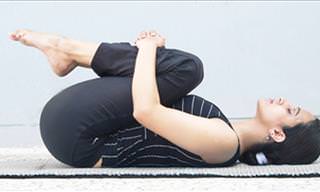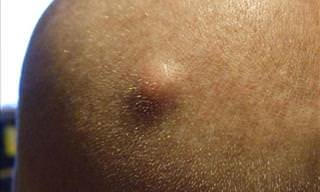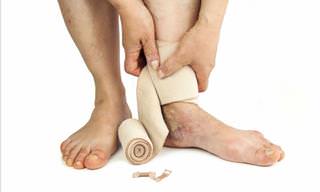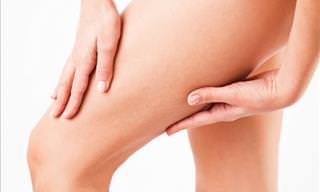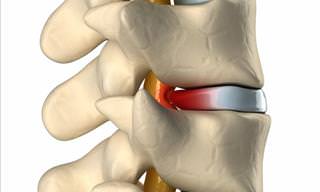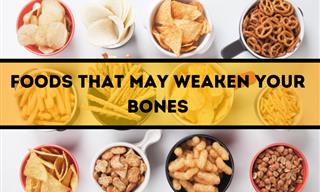Spinal Discs
The spinal disc is the soft cushion that sits between each vertebra of the spine.
This disc becomes more rigid with age. In young individuals, the disc is soft and elastic, but much like many other of the body's structures, it gradually loses its elasticity and becomes more vulnerable to injury. In fact, even in individuals in their 20s, MRIs frequently show early evidence of disc deterioration.
As the spinal disc loses its elasticity, it can rupture. When a rupture occurs, a part of the spinal disc pushes away from its normal boundary, causing a herniated disc. When a herniated disc bulges out from between the vertebrae, the spinal cord and the spinal nerves may become pinched. If a herniated disc is pushed far enough, these structures may become compressed, and that's where the pain begins.
Symptoms of a Herniated Disc

There a quite a number of reasons behind why someone might develop a herniated disc. It may occur gradually with repetitive straining of the spine, or it might occur suddenly in an event such as an accident or a fall.
People who experience a herniated disc often already have spinal stenosis, a problem that causes narrowing of the space around the spinal nerves and spinal cord. A herniated disc would then further reduce the amount of space remaining, leading to irritation of the nerve.
Some of the most common symptoms of a herniated disc include electric shock pain, coupled with sensations of tingling and numbness. If these sensations are felt in your arms, then this indicates a compression in the neck region. If you feel electric shocks going down through your legs, then you've probably got a compression in your lower back.
If you've got a herniated disc, then you might also experience muscle weakness, due to the interruption of certain brain signals. Bowel or bladder problems are other common symptoms of a herniated disc, and these shouldn't be ignored since they may be a sign of cauda equina syndrome. If you're finding it hard to have bowel movements, urinate, or if you experience numbness around your genitals, then visit your doctor immediately!
Diagnosis and Treatment of a Herniated Disc
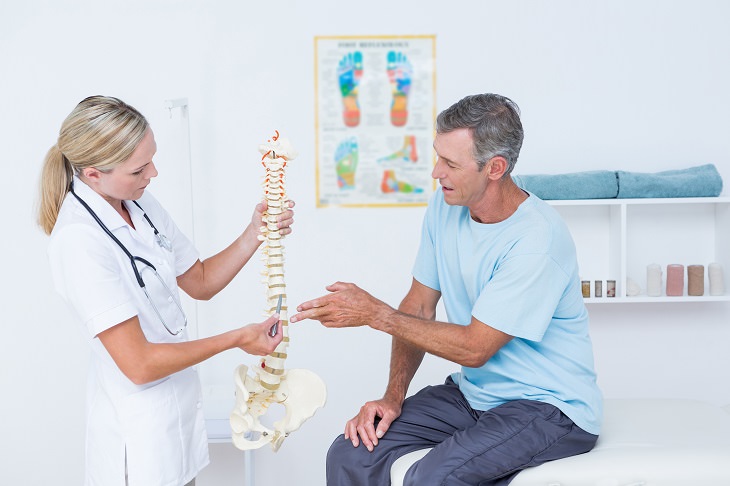
Typically, your doctor will be able to diagnose a herniated disc through a thorough physical examination, by testing reflexes, sensation, and muscle strength. An MRI is also commonly used to make the diagnosis more accurate.
While people diagnosed with a herniated disc sometimes have to undergo surgery, it is usually considered as a last resort, especially in less severe cases. There are many different treatments an individual can try out first, and the most effective include:
• Rest & Activity Modification
The first treatment is to rest and to avoid carrying out any activities that might aggravate your symptoms. Many disc herniations will resolve if given enough time.
• Ice & Heat Applications
These can be extremely helpful in relieving a disc herniation's most painful symptoms. By helping to relax the back's muscles, ice and heat applications can relieve muscle spasms and provide efficient pain relief.
• Anti-Inflammatory Medications
Nonsteroidal anti-inflammatory medications (NSAIDs) are often prescribed, and help to relieve some of the pain. By reducing inflammation, these medications can reduce some of the pressure on the compressed nerves. NSAIDs should only be used under a doctor's supervision.
• Oral Steroid Medications
These can be very helpful in episodes of an acute (sudden) disc herniation. Some of these medications include Prednisone and Medrol. Like NSAIDs, these powerful anti-inflammatory medications can relieve your symptoms by reducing inflammation around the compressed nerves.
• Other Medications
Other medications used include muscle relaxers and narcotic pain medications. Narcotic pain medications are useful for severe, short-term pain management. Be warned though, these medications can be addictive and can make you drowsy. It is important to use these for only short stretches of time. Muscle relaxers are used to treat the spinal muscle spasms often seen with disc herniations. Such muscle spasms are often worse than the pain from the disc pressing on the nerves, so muscle relaxers provide some welcome relief.
• Epidural Steroid Injections
Cortisone injections can be administered directly to the area of nerve compression. Like oral anti-inflammatory medications, the idea is to relieve the compression on the nerves. When an injection is used, the medication is delivered directly to the affected area, rather than traveling throughout your entire body, as is the case with oral medication.
Source: verywell, verywell
 Go to BabaMail
Go to BabaMail







